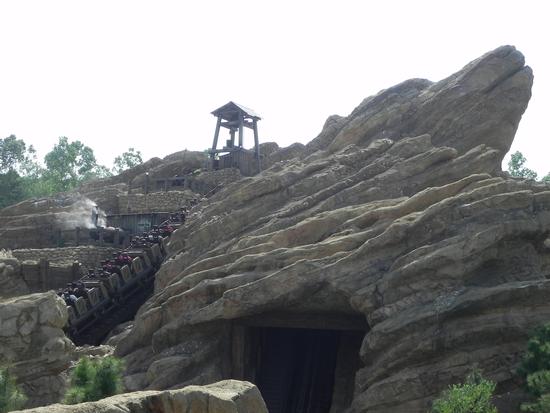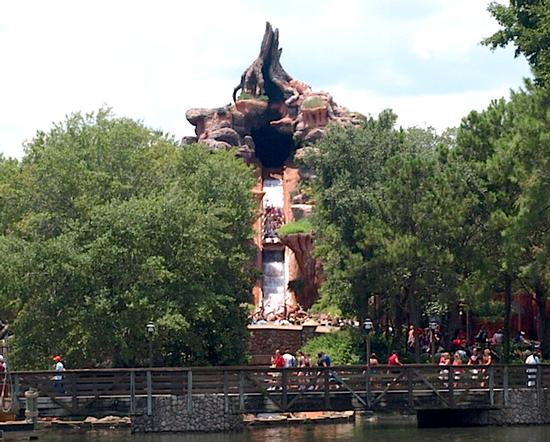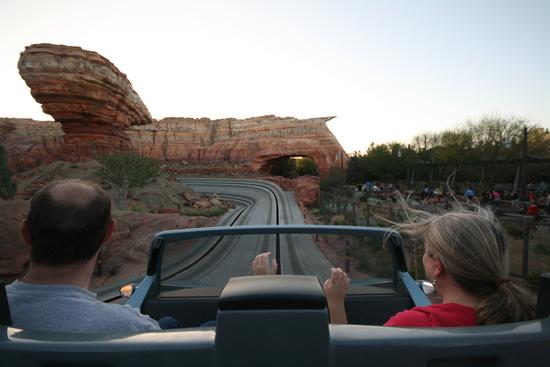The term 'clone' is familiar in the theme park world. But it has a variety of meanings. A full-fledged, 100% clone is pretty rare. Rides are often changed in their second (and possibly third) iteration as new technology emerges, space constraints limit size and location can dictate changes in language, theme, etc. For the purposes of this article, we aren't talking about 'identical' ride clones (such as Toy Story Midway Mania) which remain largely unchanged from park to park. Instead let's narrow the focus to: clone of ride system/layout, clone of theme, idea, characters, brand… or any combination of those.
So why do parks clone their attractions? It's pretty simple.
Clones attractions are, normally, cheaper to construct than an original idea. Millions upon millions of dollars are pumped into research, design and technology to develop state-of-the-art, never before seen effects, theming and ride mechanics. Taking an existing idea, that has already been through all of the R&D and simply making it again is usually cheaper and will (ideally) allow for a better return on investment than the first.
Secondly, most of the major bugs should have been worked out. New attractions aren't perfect, far from it, most go through extensive test and adjust phases, and many are ultimately altered because effects or set-pieces either do not work as planned (I'm looking at you, original Hatbox Ghost) or degrade over time (ahem, Expedition Everest's Yeti).
Finally, let's not forget, the reason attractions are cloned is because people like them. Popularity and keeping with the brand are usually major driving forces behind clones. Tower of Terror is incredibly popular, so it gets clones. Haunted Mansion is a Disney staple, and part of the brand, so it gets clones.
But can a clone ever be better than the original? Here are five that fared far better the second time around…
Big Grizzly Mountain Runaway Mine Cars
Cloning Big Thunder Mountain Railroad

Arguably the best family coaster across most Disney properties, Big Thunder Mountain Railroad has been a hit since premiering in Disneyland in 1979. But what to do in Hong Kong? Struggling since it opened due to a lack of attractions, in 2012 Disney decided to give Big Thunder a plussing in more ways than one. Adding dueling tracks, linear induction motor launches, backwards segments and some explosive new effects make this clone the best of the bunch by far and (along with Mystic Manor) breathed new life into the park, which is now reporting year-over-year record attendance levels.
Splash Mountain (Walt Disney World's Magic Kingdom)
Cloning Splash Mountain (Disneyland)

Here is an example of a great attraction that managed to get greater. On paper it all seemed a little boring: an indoor log flume ride — cue the skeptics and naysayers. But Disney Imagineers were given nearly carte-blanche to blue sky what would become one of the most expensive Disney attractions ever built (at that time) and it paid off in spades. An instant classic since day one, Splash's tour through Chick-a-Pin Hill is full of fun and a surprising amount of thrills.
Walt Disney World's second version benefits from more show scenes (making the ride longer and the story to be more developed), much better lighting and audio, and an extra hill and drop into the Laughing Place. Ultimately, more ride and queue space, a better overall flume system, and double-rider log capacity give the WDW version the edge.
Expedition Everest
Cloning Matterhorn Bobsleds

Ok, let's call a spade a spade. They are both roller coasters, set in mountains, with Yetis. Yes, they carry totally different storylines and theme, but they are clearly cut from the same chunk of ice, rock and imagination. Just like Hong Kong Disneyland, Disney's Animal Kingdom opened without enough major attractions (although you would never guess it by attendance numbers). Enter Expedition Everest in 2006, featuring incredible theming and a thrilling backwards portion. Everest was a hit. Even a strobe-lit, frozen in-place, defunct abominable snowman animatronic can't keep the turnstiles from clicking all day, every day.
Radiator Springs Racers
Cloning Test Track

Here is an example of a ride system and layout cloned basically turn-for-turn but with entirely different theming. Test Track opened to great fanfare following almost two years' worth of opening delays. Disney had done it, finally. But those problems that caused those delays didn't exactly go away after opening. But even a recent refresh making it more interactive doesn't hold a candle to its sister attraction on the west coast. Radiator Springs Racers took the Test Track systems and technology and wrapped them up with a big Pixar bow (and a healthy dose of theming thanks to faux-rock wunderkind Zsolt Hormay). What results is a ride that feels smoother (load/unload is drastically improved over TT), improves capacity (thanks to dueling tracks) and encounters much less downtime. Shiny, candy colored racers feel like they're being run by pure magic and not 10,000 computer servers — it's that cool.
Grizzly River Run
Cloning Kali River Rapids

To round out the list, we turn to a ride system that Disney still hasn't got 100% right. The idea of a white-water rafting ride is nothing new, but Disney decided to give it an enviro-conscios story and some heavy theming, culminating in a final soaking plunge.
The ride is pretty enough, (the amount of theming, effects and story have been significantly cutback or removed over time) but it offers little to no thrills. It's also really short. Things get interesting (and wet) at the plunge, but by that time the ride is over anyway.
Hop on over to California Adventure and we see a very similar ride system and layout, but this one works much better. You may not know this, but it does hold the record for being the longest, tallest and fastest river rapids ride in the world. Combine that with better overall theming, rafts that spin as they descend not one but two chutes, and rougher, choppier rapids and the clear winner emerges. Sure the queue sucks, and we won't discuss the far superior Bluto's Bilge Rat Barges over at Universal, but props to Disney for learning from the first one and upping the bar for their second spin around the rapids.
Tweet
But opinions vary, so it's cool.
Yet I'm bothered by the complete misuse of the word clone. A clone by definition is "an identical copy." Only Splash Mountain comes close to that. There are plenty of attractions that better fit the clone description, such as Fantasyland dark rides, Sleeping Beauty Castle (DL/HKDL), Wonder Wheel/Fun Wheel, etc. These simply aren't clones, but I get it: "who used [tech/theme] better?" doesn't make for a great clickable headline.
It's better to compare Matterhorn to Magic Kingdoms Space Mountain. Both follow a very closely designed track system and were built in roughly the same manner.
It's a bad ride.
So you're telling me that a mountain-themed roller coaster where you get chased by a Yetti is more comparable to an indoor wild mouse coaster themed to space than another mountain-themed roller coaster where you get chased by a Yetti?
That's like comparing Captain EO to Shrek 4D! Yes they use similar technology, but they're as different as different can be. The clones that Robert talks about are clones that use the same concept, which Everest and Matterhorn do.
Everest is more inspired by and improving upon Matterhorn, but it's not a clone. The ride technology is so radically different between the two. You're focusing too much on the scenery and not the construction.
This article has been archived and is no longer accepting comments.